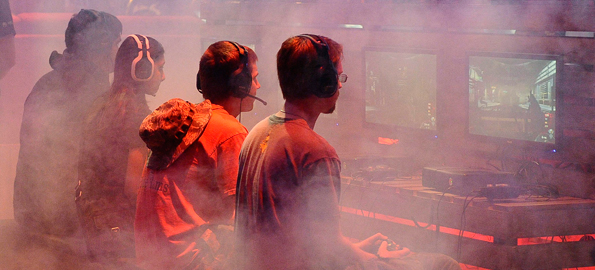by Nick Grevas

American parents are facing a problem that was never an issue for those who raised them: video games.
These games are highly stimulating, have been considered addictive and have even inspired government action.
California tried to protect children from the violent content in video games with a 2005 law making it illegal for retailers to sell such items to minors. The Supreme Court June 27 ruled the law was unconstitutional, but it was not unfounded.
According to a 2010 survey by the Electronic Software Association, 18% of all gamers are between the ages of 12 and 17, yet three of the five top-selling games on the market received an “M for Mature” rating from the Entertainment Software Rating Board.
That’s roughly the equivalent of the Motion Picture Association of America’s R rating for a film, and indicates “content that may be suitable for persons ages 17 and older. Titles in this category may contain intense violence, blood and gore, sexual content and/or strong language.”
So how can parents find out more specifically what’s in these games before buying them for their children? In addition to its ratings system, the ESRB provides a detailed description of all potentially inappropriate elements included in each game. Parents can access these comprehensive assessments on the organization’s website: www.esrb.org.
By way of a further safeguard, video game manufacturers are now designing their systems to come with parental controls that block content according to the ESRB rating. The Playstation 3 and Nintendo Wii both come with parental control options that can prevent particular kinds of games from being played, via the use of a PIN-number code.
For the Playstation 3 console – which lets users connect to the Web to buy games and compete with other players – the controls for the Internet browser and content settings can be found under “security settings.” Here, parents can make adjustments to block content according to the rating on video games, Blu-ray discs and even DVDs. Parents can also set up a PIN-number system for prohibiting online purchases by entering the “account management” settings.
The Wii operates on a similar platform, using a universal PIN code to access particular content. To set this code and choose what to lock, parents can go to the Wii menu at the bottom left, select “console,” then “console settings,” and the option for parental controls can be found on the second page of options. Once there, a parent can set the PIN and will be able to block the Internet channel, the messaging board channel, game content and other Wii functions.
“When?” and “For how long?” are two other questions parents must address, since children may show a tendency to gravitate to the video screen at inappropriate times – opting, for instance, to play baseball inside on the television rather than outside in the fresh air. Thus, the Electronic Software Association’s survey found that 80% of parents place limits on the amount of time their children are allowed to devote to video games.
Wendy Wood – a mother of five in Goshen, N.Y., who says that video games have had an adverse effect on her children – is among them. She says the games cause chaos, fighting and “unnecessary drama” over whose turn it is to play, especially between her two boys, Ryan, 14, and Jared, 10.
During the last school year, Wood only permitted the use of video games after all chores were done and homework finished. The result, however, turned out to be rushed chores and shoddy homework, she said. This year, Wood plans to implement a strict “weekends only” rule.
Other popular strategies among parents include requiring an hour of reading for an hour of games, and a simple limit of one hour per day for gaming.
Catholic author and blogger Danielle Bean has a policy similar to Wood’s, saying that “during the school year, the boys play only on weekends for a set period of time.”
The Xbox 360 has won “high score” in the setting-limits category by including daily and even weekly time limits that can be set up by first accessing “My Xbox,” then “console safety” and selecting “turn on console safety.” This will allow parents to establish system settings by once again entering a four-digit password.
Along the same lines, Microsoft includes a “Family Timer.” The company’s version gives frequent warnings that the system is shutting down, up to five minutes before it shuts down. In response to any of these notifications, a parent can enter the pass code and add more time to the daily or weekly allotment.
By using various controls and consulting information provided by the ESRB, parents should be able to protect their children’s well-being against objectionable content while still allowing them to enjoy a healthy dose of age-appropriate gaming.
